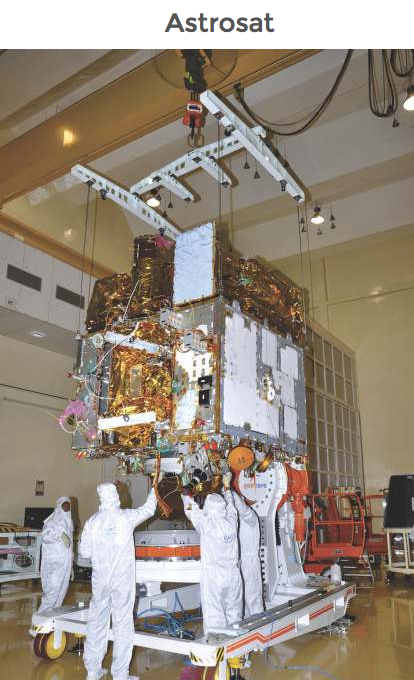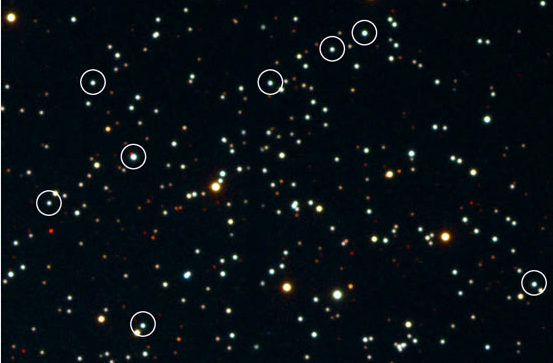
ASTROSAT is India’s first dedicated multi wavelength space observatory. One of the unique features of ASTROSAT mission is that it enables the simultaneous multi-wavelength observations of various astronomical objects with a single satellite.

[Satnews] The UVIT telescope aboard ASTROSAT, the Indian Space Research Organization's space observatory, has taken its first images of the sky—a cluster of stars known as NGC 188. The picture was taken using ultraviolet light, invisible from the Earth, and covers a field of view some 100 times larger than the Hubble telescope. These first observations demonstrated that the instrument survived the launch, and is performing very well in space.

ASTROSAT will provide astronomers with a unique capability for science: it has several telescopes which aligned to observe the same object at the same time in multiple wavelengths (from optical to hard X-rays). Funded by the Canadian Space Agency, Canada provided the electronic "eyes" for UVIT to see in ultraviolet light. Canadian astronomers will have access to 5 percent of ASTROSAT's observation time, which includes all the instruments, as well as participation in the UVIT team observing program. (Credit: ISRO/UVIT team)
Back on September 28, 2015 Canada collaborated with the Indian Space Research Organization on ASTROSAT, India's first orbiting astronomy observatory, dedicated to studying celestial objects, which has provided a major reward for Canada.
ASTROSAT's design is both powerful and unique as it carries five separate instruments that will be able to observe its targets in multiple wavelengths (from X-ray to visible light) at the same time—something that can only be currently done by coordinating ground and space telescopes (and lining up their busy schedules for simultaneous observations). Perhaps, and most importantly for Canadian astronomers like Dr. John Hutchings of the National Research Council Canada, who is the principal investigator for Canada's contribution, ASTROSAT is capable of studying astronomical objects using ultraviolet (UV) light and X-rays, kwhich cannot be done from the ground.
For astronomers UV and X-ray wavelengths are the principal signals from exotic objects like black holes, hot white dwarfs, neutron stars and quasars.